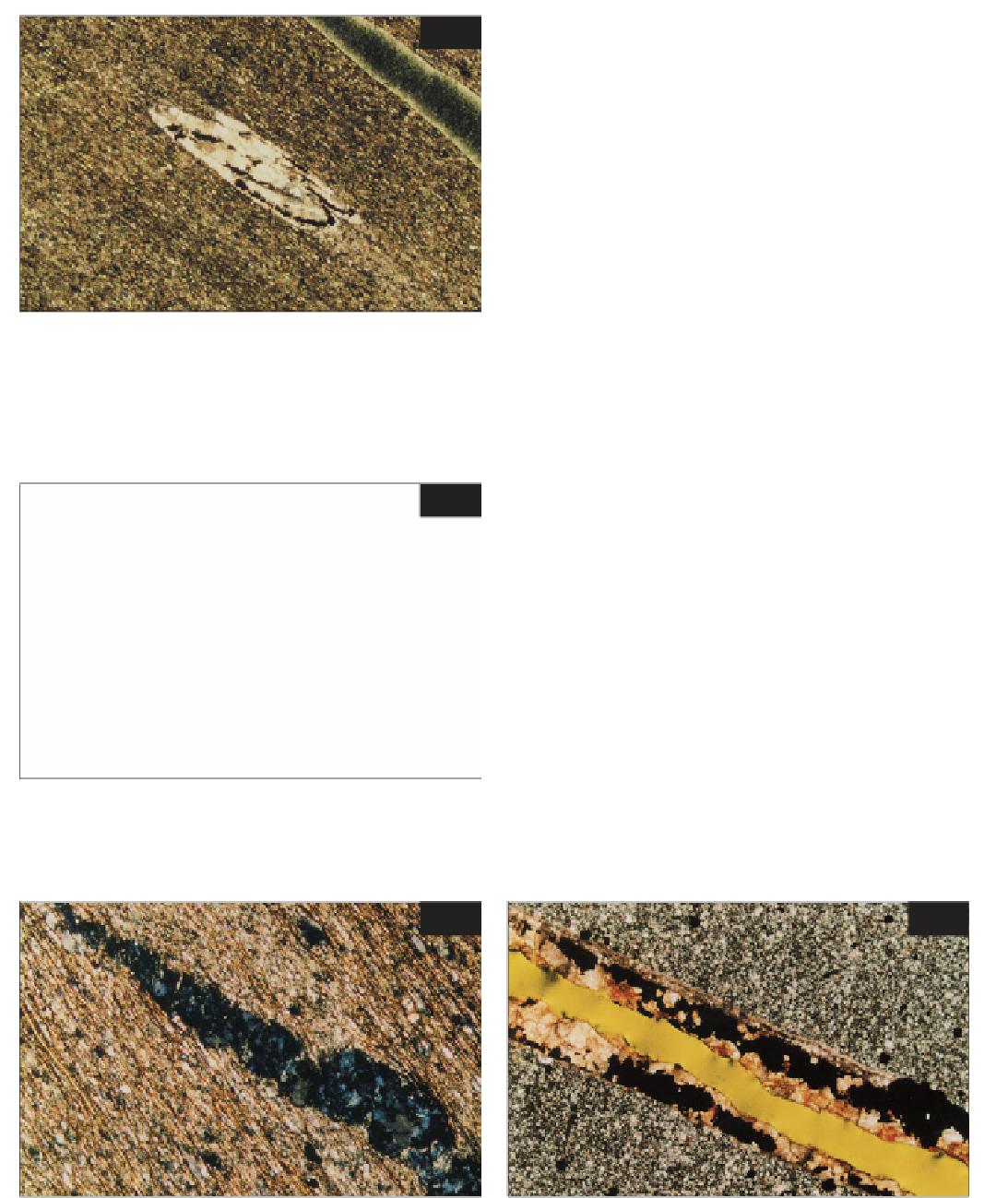Geoscience Reference
In-Depth Information
106
eradication of fossils or renders them too obscure to be
recognized. Fossil remnants are sometimes observed
within slates that were incompletely metamorphosed and
where the slaty cleavage is poorly developed (
106
).
J
OINTS AND VEINS
Slate is unloaded as it is brought to the Earth's surface
and the rock fractures in a set of directions other than the
main cleavage; such fractures are known as joints. These
joints can be exploited to extract the slate blocks.
However, sometimes the joints are tight (with no visible
break) and slates may be produced that include these
joints, which may act as planes of weakness. In
geological time, joints can open slightly and become
tightly filled by minerals forming a vein. The in-service
performance of veins depends on the minerals they
contain and how completely they have infilled the joint
and cemented the joint walls. Vein-filling minerals can
include quartz (
107
), carbonates, iron sulfides, and
chlorite (
108
). Rapid decay of unsound vein materials
may lead to splitting and discolouration of the slate
(
109
).
106
Fossil remnant in a Spanish slate. Composed of
calcite (pink) and indicative of incomplete
metamorphism; XPT, ×35.
107
I
NCLUSIONS AND NODULES
Many slates exhibit some small irregular concentrations
of their constituent minerals that are seen to protrude
from the cleavage surface as nodules. An abundance of
nodules making the cleavage surface uneven may cause
the slate not to lie flat on the roof and compromise the
weatherproofing. Mineral concentrations not protruding
107
A slate from Argentina with a quartz vein (grey);
XPT, ×35.
108
109
108
A chlorite vein (blue) in 'Castilla' slate (Spain);
XPT, ×150.
109
Spanish slate that has failed along a vein filled by
calcite (brown) and pyrite (black); XPT, ×35.




